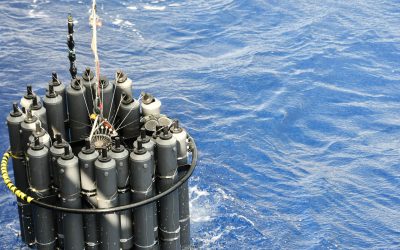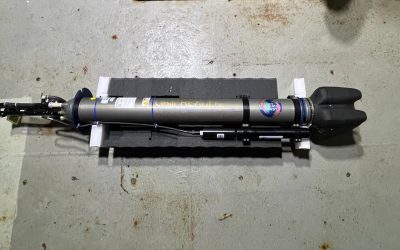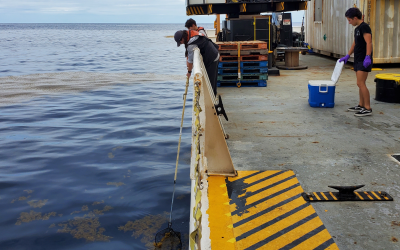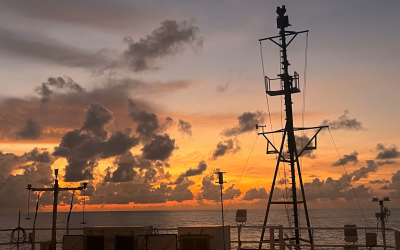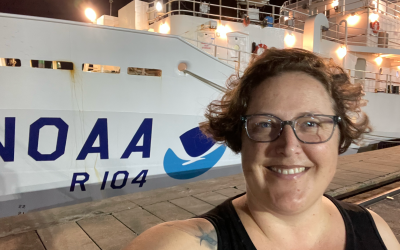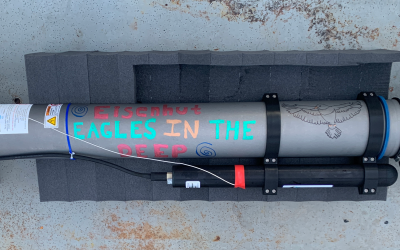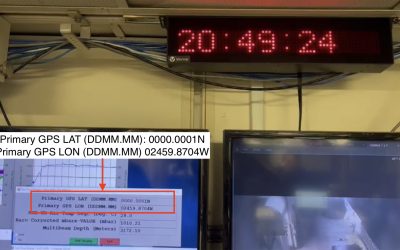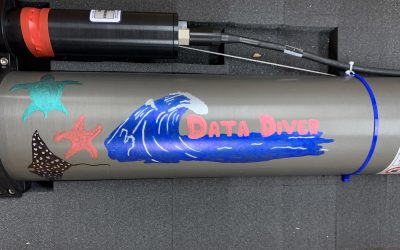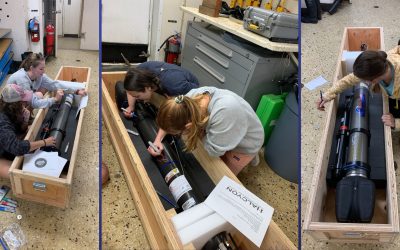2023 GO-SHIP A16N
Atlantic Repeat Hydrography along 23.5°W from 6°S to 63°N
Re-occupation of historic stations in the Equatorial, Tropical and North Atlantic Ocean up to the coast of Iceland, with a few stations in the South Atlantic Ocean.
This cruise will be part of a decadal series of repeat hydrography sections jointly funded by NOAA-CPO/GOMO and NSF-OCE as part of the Global Ocean Ship-based Hydrographic Investigations Program (GO-SHIP) program, an international component of the Global Ocean Observing System (GOOS). Academic institutions and NOAA research laboratories will participate on what will hopefully be the first successful NOAA GO-SHIP mission since 2018. The GO-SHIP program focuses on the need to monitor inventories of CO2, tracers, heat and freshwater and their transports in the ocean. Earlier programs under CLIVAR, WOCE and JGOFS have provided a baseline observational field for these parameters. The new measurements reveal much about the changing patterns on decadal scales. The program serves as a backbone to assess changes in the ocean’s biogeochemical cycle in response to natural and/or man-induced activity. Global changes in the ocean’s transport of heat and freshwater, which can have significant impact on climate, can be followed through these long-term measurements. The GO-SHIP Program provides a robust observational framework to monitor these long-term trends. The goal of the effort is to occupy a set of hydrographic transects with full water column measurements over the global ocean to study physical and hydrographic changes over time. These measurements are in support of:
-
- Model calibration and validation
- Carbon system studies
- Heat and freshwater storage and flux studies
- Deep and shallow water mass and ventilation studies
- Calibration of autonomous sensors
This program follows the invasion of anthropogenic CO2, CFCs and other tracers into intermediate and deep water on decadal timescales and determines the variability of the inorganic carbon system, and its relationship to biological and physical processes.
The specific goals of this cruise are as follows:
- Re-occupation of the historic stations in this line, including up to the coast of Iceland. A total of 150 stations, from surface to bottom water sampling are required to fulfill the objectives for this cruise.
- A second cast dedicated to biological measurements at select stations throughout the line
- Deployment of up to 10 core Argo floats, up to 7 BGC-Argo floats and 1 deep Argo float
- Deployment of up to 40 drifters in support of NOAA’s Global Drifter Program
The GO-SHIP line A16N will take place from March 6, 2023 to May 9, 2023 and will cover the Equatorial, Tropical and North Atlantic Ocean with a few stations in the South Atlantic Ocean.
Please join along on the journey by following the expedition blog!
Leg 1 Chief Scientist: Denis Pierrot, AOML/Co-Chief Scientist: Zachary Erickson, PMEL
Leg 2 Chief Scientist: Leticia Barbero, AOML/Co-Chief Scientist: Laura Cimoli, UCSD
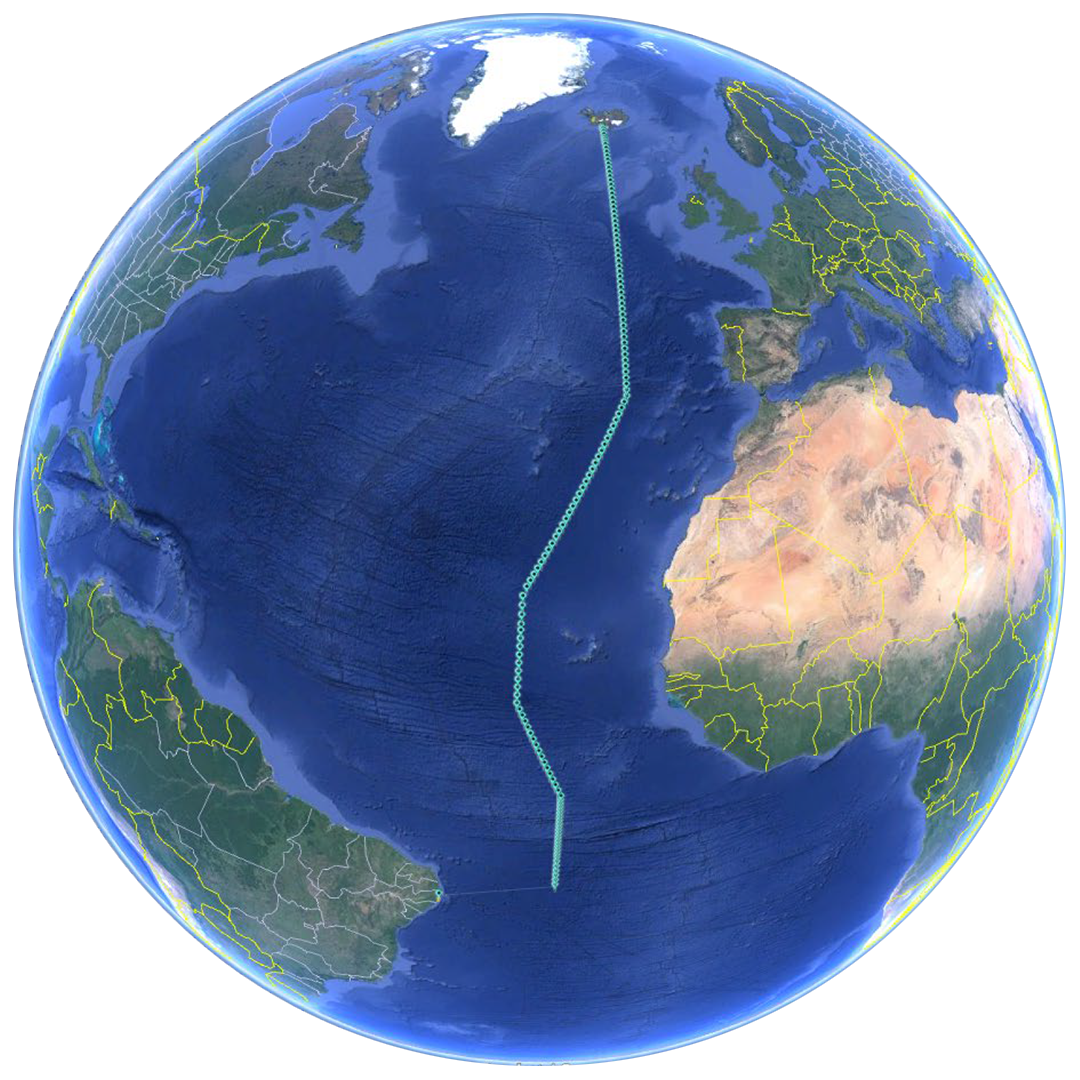
Figure 1: Plot of cruise track. The ship will depart the port of Suape, Brazil and end in Reykjavik, Iceland. Image: Google Maps
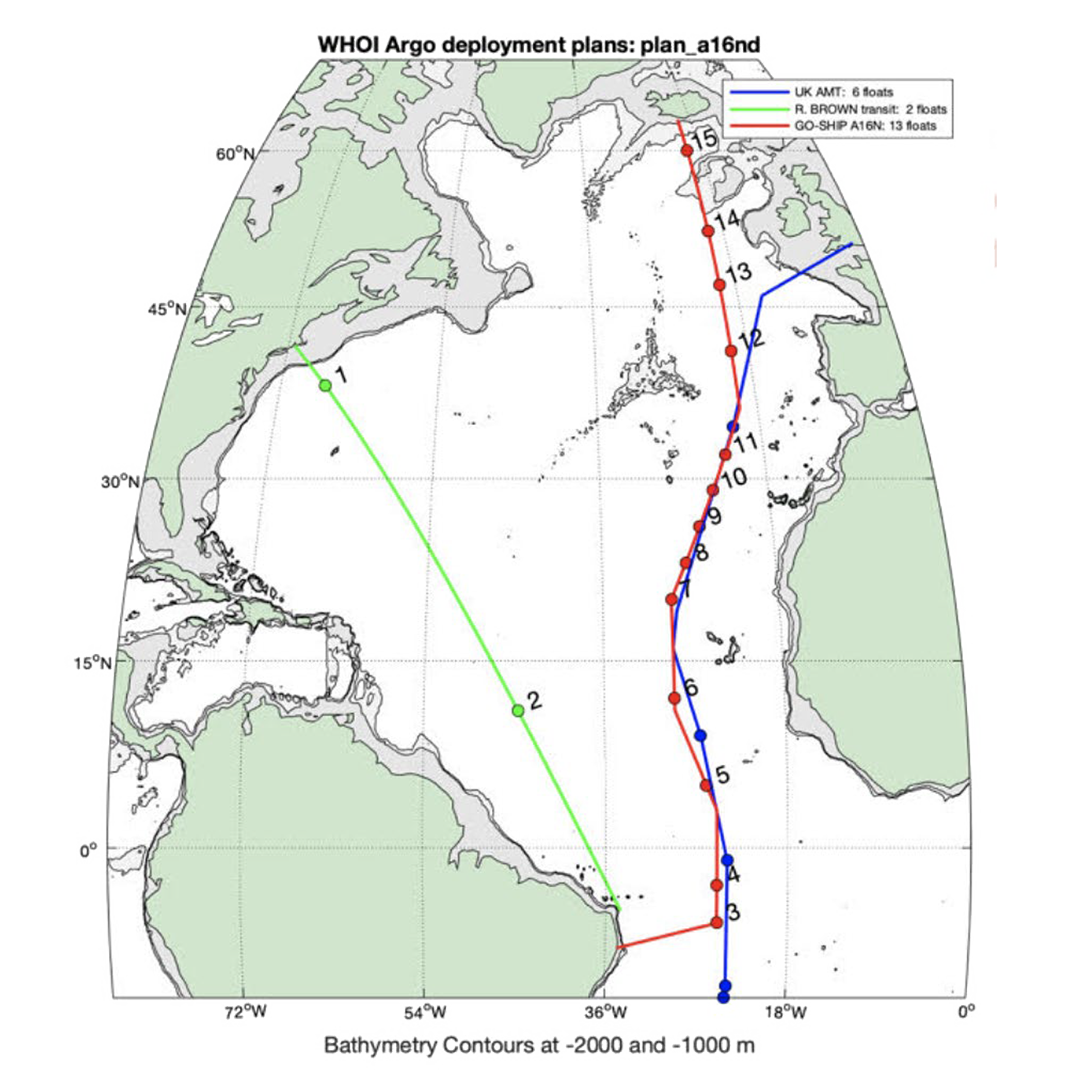
2023 GO-SHIP A16N Atlantic Expedition Logs
A16N—Leg 2
Intro to 2023 GO-SHIP A16N with CTD watchstander Shannon McClish It’s GO time! April 22, 2023 Shannon McClish, CTD-watchstander Welcome to the NOAA Ship Ronald H. Brown line A16N leg 2! We have finished a long transit from Rota, Spain and arrived at our first...
Climate READY Ambassador
Our third float, Climate READY Ambassador, has been deployed. Climate READY Ambassador—FAU Pine Jog Environmental Education Center in West Palm Beach, FL Location: 24º 31’ N, 26º28’W Time: WED 29 MAR 2023 20:37 UTC Float Number: 1361 (WMO: 4903487) Float Type:...
Sargassum Sampling
Unexpected research opportunity Sargassum Sampling March 21, 2023 Ellen Park As you may or may not have heard about in recent news stories, such as “Why huge masses of seaweed are floating to Florida and the Gulf” in the Washington Post, the floating seaweed...
Ship Operations
Life on board the RV Ron Brown Ship operations March 19, 2023Zach Erickson We’re about halfway through the cruise, and the ship has fallen into its rhythm. The interesting thing about a research cruise such as this one is that operations are happening 24/7. So...
Introductions
A selfie with Melissa Miller dockside with the RV Ron Brown Introductions of some of the science crew Tyler Christian Hey y’all, I’m Tyler Christian! I’m a research associate at the Atlantic Oceanographic and Meteorological Laboratory in Miami where I analyze...
Eagles in the Deep
Our second float, Eagles in the Deep, has been deployed. Eagles in the Deep—George Eisenhut Elementary in Modesto, CA Location: 4º31’N, 25º45’ Time: FRI 17 MAR 2023 17:50 UTC Float Number: 1356 (WMO: 4903486) Float Type: Navis Float Program: GO-BGC The lucky...
Equator Crossing
Leaving the Southern Hemisphere behind.March 13, 2023 by Ellen Park On March 13th at 20:49 UTC, we crossed the equator, leaving the southern hemisphere and entering the northern one! This moment was something that many of the scientists onboard were eager to...
Data Diver
Our first float, Data Diver, has been deployed. Data Diver – Penn Alexander School in Philadelphia, PA Location: 4º 28’ S, 25ºW Time: FRI 10 MAR 2023 18:18 UTC Float Number: 1475 (WMO: 4903489) Float Type: Navis Float Program: GO-BGC This float was adopted by...
Decorating Floats
We had a little decorating party during our transit! March 9, 2023 by Ellen Park After leaving Port Suape, Brazil on March 6th, we finally arrived at our first station at approximately 20:00 on March 8th. During transit, we were able to finish setting up...

